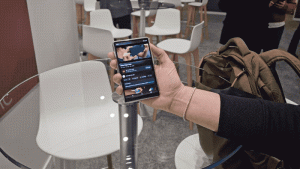Interview: Fostering a Culture of Innovation
In today’s fiercely competitive business landscape, organizations face mounting pressure to foster a culture of innovation in order to stay relevant and thrive. Innovation has become a vital driver of success, enabling companies to adapt to change, drive growth, and seize new opportunities. In this comprehensive analysis, we explore the strategies, practices, and industry data that underline the significance of fostering a culture of innovation within businesses, drawing on insightful perspectives from industry leaders and experts.
The Power of Cross-Functional Collaboration:
2In today’s interconnected and complex environment, breaking down silos and encouraging collaboration across departments and teams has become crucial for organizations striving to drive innovation.
Research conducted by McKinsey highlights the impact of cross-functional collaboration on innovation. Companies that prioritize collaboration across different functions are 1.5 times more likely to be innovative. This statistic emphasizes the need to create an environment that facilitates the exchange of ideas, encourages knowledge sharing, and fosters collective ownership and accountability.
Xavier-Marti Carne, CEO of thethings.io, stresses the significance of cross-functional collaboration in driving innovation within the company. He states: “Throughout our journey at thethins.io, we have witnessed the remarkable transformative power that arises when we break down departmental barriers and foster a culture of collaboration. By creating an environment where diverse perspectives converge, we unlock the potential for groundbreaking innovations that transcend conventional boundaries. This commitment to collaboration has been nothing short of instrumental in propelling our company’s unprecedented success and enabling us to maintain a leading edge in the highly competitive market landscape.”
Embracing a Growth Mindset:
Cultivating a growth mindset is another crucial element in fostering a culture of innovation. A growth mindset, characterized by a passion for learning, resilience, and a willingness to embrace challenges, fuels the pursuit of innovation and drives individuals to surpass their limits.
Research by Stanford psychologist Carol Dweck supports the importance of a growth mindset in innovation. Individuals with a growth mindset are more likely to embrace innovation and demonstrate resilience in the face of challenges. Organizations that nurture a growth mindset create an environment that encourages curiosity, risk-taking, and continuous learning – essential ingredients for driving innovation.
Xavier, highlights the significance of a growth mindset at his company, stating, “We instill a culture that encourages calculated risks, experimentation, and learning from both successes and failures. By fostering a growth mindset, we empower our team to think creatively, explore uncharted territories, and stay at the forefront of innovation. Our employees are encouraged to take ownership of their ideas and are provided with the resources and support needed to turn those ideas into reality. This mindset of constant learning and improvement has been a driving force behind our innovation-driven culture.”
Building a Culture of Innovation:
Successfully fostering a culture of innovation requires a comprehensive approach that combines cross-functional collaboration, a growth mindset, and the utilization of emerging technologies. Companies must prioritize collaboration and create opportunities for interdisciplinary teams to work together, facilitating the exchange of ideas and fostering a collective sense of ownership.
Furthermore, organizations should invest in cultivating a growth mindset by encouraging continuous learning, embracing failure as an opportunity for growth, and providing resources for innovation initiatives. By nurturing a growth mindset, companies inspire employees to think creatively, take risks, and challenge the status quo.
Embracing emerging technologies can also fuel innovation within businesses. Leveraging tools like data analytics, artificial intelligence, and automation can streamline processes, uncover insights, and create new possibilities for innovation.
Xavier, adds his perspective on building a culture of innovation, stating, “At thethings.io, we believe that innovation stems from a mindset that is open to new possibilities and embraces challenges. By nurturing a growth mindset, we encourage our employees to take ownership of their ideas, explore innovative solutions, and continuously strive for improvement. We also invest in emerging technologies that empower our teams to leverage data, automation, and artificial intelligence to drive innovation across our organization. This holistic approach has allowed us to foster a culture of innovation that fuels our company’s growth and positions us as a leader in our industry.”
Fostering a culture of innovation is no longer a luxury but a strategic imperative for businesses seeking long-term success. By prioritizing cross-functional collaboration, cultivating a growth mindset, and harnessing emerging technologies, organizations can unlock their full innovation potential.
The insights provided by industry leaders, such as Xavier, shed light on the transformative power of fostering a culture of innovation. These insights, combined with industry data and research, underscore the critical role that collaboration, a growth mindset, and technological advancements play in driving innovation within businesses.
As companies navigate the dynamic business landscape, the cultivation of a culture of innovation becomes a key differentiator. By embracing these principles, organizations can position themselves as industry leaders, driving positive change and delivering value to both their customers and employees.










